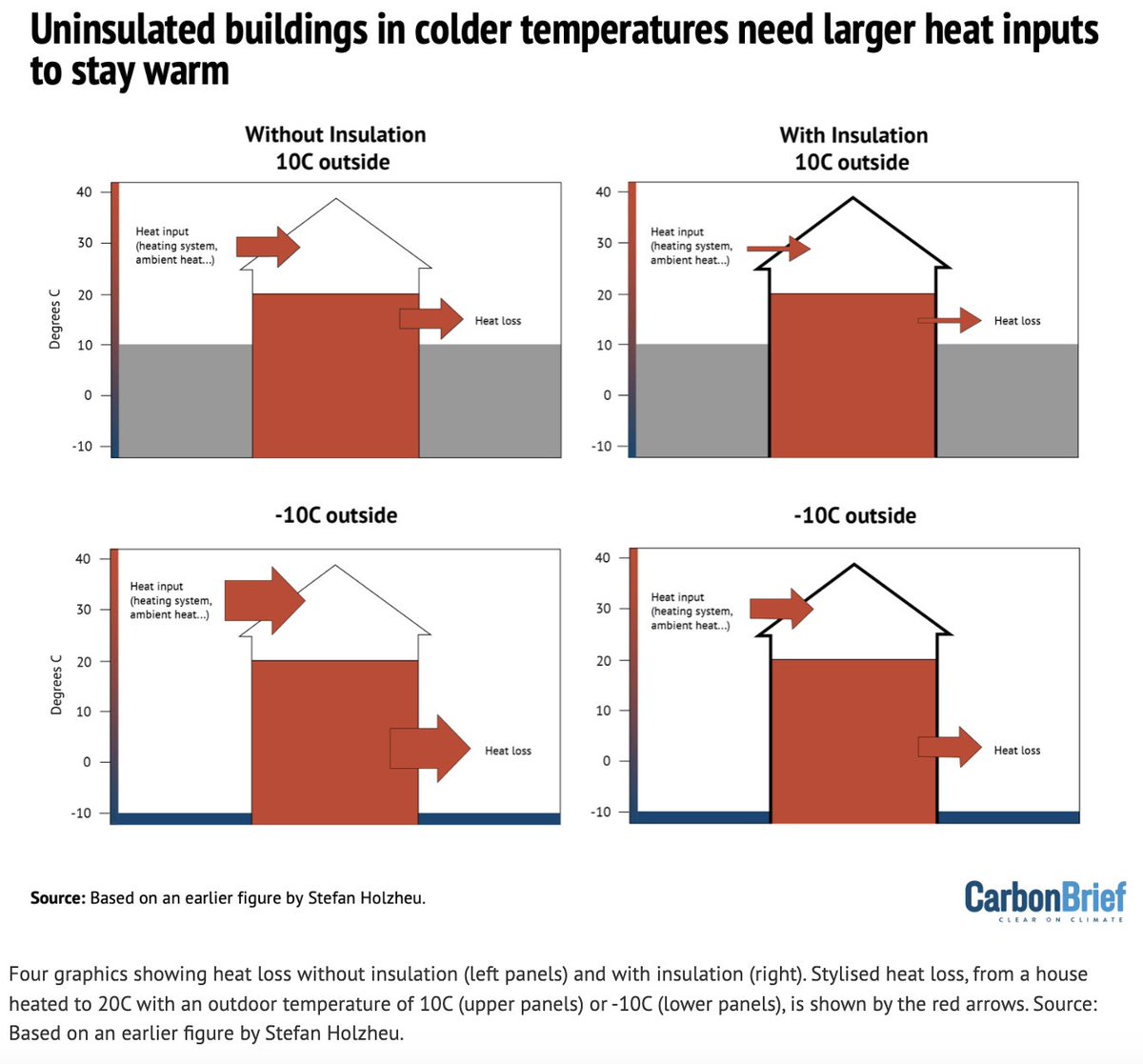Beer made with heat pumps is becoming a thing.
Yes, that's right - a 🧵 on the electrification of beer brewing.
Yes, that's right - a 🧵 on the electrification of beer brewing.

1/ First up: @hepworthsbeer partnered with @futraheat & @energygovuk to install and trial their heat pump prototype at the brewery.
It recovers low grade waste heat and boosts it up to 150°C reducing fossil fuel use by up to 90%.
https://t.co/EET7fRweuOcoolingpost.com/uk-news/uk-fun…

It recovers low grade waste heat and boosts it up to 150°C reducing fossil fuel use by up to 90%.
https://t.co/EET7fRweuOcoolingpost.com/uk-news/uk-fun…

2/ Next is @Feldschloss1876 - they make 250 million bottles and cans of beer in Rheinfelden, Switzerland.
A heat pump makes this process more efficient and reduces the company's annual CO2 emissions by 275 tonnes.
https://t.co/zxd4kQoHFsenergieschweiz.ch/stories/waerme…

A heat pump makes this process more efficient and reduces the company's annual CO2 emissions by 275 tonnes.
https://t.co/zxd4kQoHFsenergieschweiz.ch/stories/waerme…

3/ Sinebrychoff in Finland is the oldest brewery in the Nordic countries and has been labelled Finland's most energy-efficient brewery. Heat recovered from the brewing process through heat pumps now supplies around 26% of the plant’s annual heating needs.
https://t.co/pcMkRzPKUXecopal.fi/en/industry-an…

https://t.co/pcMkRzPKUXecopal.fi/en/industry-an…

4/ @Heineken working with @Eneco is about to install a 4 MW heat pump in the village of Zoeterwoude, the site of the largest brewery in the European Union.
https://t.co/CAv96F5ipeeneco.com/wat-we-doen/kl…

https://t.co/CAv96F5ipeeneco.com/wat-we-doen/kl…

5/ Ayinger Brewery in Germany uses a heat pump in the bottle cleaning process reducing energy and water consumption of this process by almost 90%.
https://t.co/pGxve7CX7Kenergie-experten.org/projekte/braue…

https://t.co/pGxve7CX7Kenergie-experten.org/projekte/braue…

6/ Across the pond in the US @newbelgiumbeer partnered with @AtmosZeroSteam to introduce a 650 kW heat pump system at New Belgium Brewing’s headquarters facility in Colorado.
insidehook.com/daily_brief/fo…
insidehook.com/daily_brief/fo…
@newbelgiumbeer @AtmosZeroSteam 7/ In Austria people heat with waste heat from beer brewing.
Brewing beer releases lots of heat.
In this example 800 homes near the are heated using waste heat upcycled by a heat pump.
https://t.co/wQx27XFtvYbrauwelt.com/en/topics/ferm…

Brewing beer releases lots of heat.
In this example 800 homes near the are heated using waste heat upcycled by a heat pump.
https://t.co/wQx27XFtvYbrauwelt.com/en/topics/ferm…

8/ Over in Australia @3ravensbrewery Melbourne’s Oldest Independent Brewery is fitting a heat pump to capture waste heat from the brewing process reducing their energy consumption by over 70 per cent.
https://t.co/bdHaOgutJ3foodanddrinkbusiness.com.au/news/3-ravens-…

https://t.co/bdHaOgutJ3foodanddrinkbusiness.com.au/news/3-ravens-…

@3ravensbrewery 9/ Austrian brewery @Mohrenbrauerei which has installed a 370 kW heat pump including a heat storage unit.
The heat pump saves the burning of
1.8 GWh/a of fossil fuels and had a payback period of less than 6 years.
https://t.co/3kP3Gt4Oy4sintef.no/globalassets/s…

The heat pump saves the burning of
1.8 GWh/a of fossil fuels and had a payback period of less than 6 years.
https://t.co/3kP3Gt4Oy4sintef.no/globalassets/s…

10/ Dutch @Gulpener brewery installed a 650 kW heat pump in the new brewhouse, which saves 75% energy compared to the old brewhouse.
https://t.co/dGRfSAQU4Sentreemagazine.nl/ondernemen/gul…

https://t.co/dGRfSAQU4Sentreemagazine.nl/ondernemen/gul…

Please share more examples you can find. I'd love to extend the list!
• • •
Missing some Tweet in this thread? You can try to
force a refresh


















